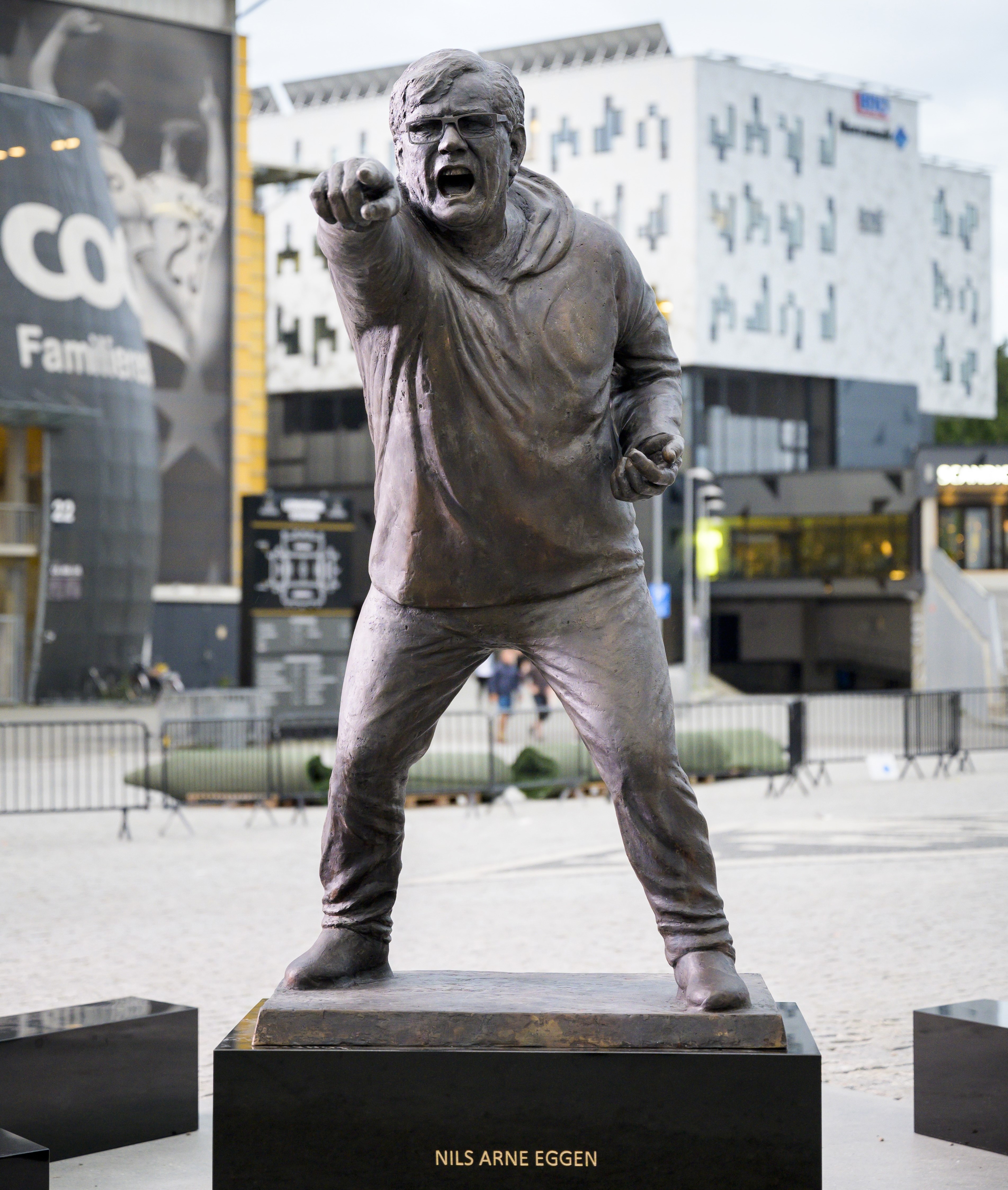The Sculptor as Rhythm Analyst
DOI:
https://doi.org/10.7577/ar.4788Abstract
A sculptor is a practitioner, and in this study, the sculptor's practice as a process is focused. Through this study, the practitioner as a rhythm analyst also becomes a researcher of his own practice. The work process is linked to a sculpture of the football trainer Nils Arne Eggen. The study's analytical question is: How can a sculptor's process with form, movement, material, and timespace be understood in a rhythm-analytical perspective? The term rhythm is understood as the philosopher Henri Lefebvre has described the term as a tool in rhythm analysis. An analysis is carried out by intertwining extracts from the sculptor's thinking texts, conversations, image collages, and theoretical-philosophical reading of concepts related to rhythm as well as to agential realism. There is rhythm in form, movement, and material, rhythm in the sculptor's bodily intra-action with the sculpture, as well as the site-specific rhythm and the timespace created by placing the sculpture on a plinth outdoors. By reading the rhythmic aspects of the sculptor's thinking texts and in conversations with him, through concepts from agential realism, choices in the work process are analysed. The analytical points are collected in four braids. Rhythm as 'meta-sense' makes visible performative potentials articulated as intertwinings comprising the sculptor's thinking, bodily affects, and energy, as well as the materiality of the timespace of the working process.
Cover photo: Ole Martin Wold/ NTB
References
Arlander, A. (2013). Artistic research in a Nordic context. I R. Nelson, Practice as research in the arts. Principles, protocols, pedagogies, resistance (s. 152–162). PalgraveMacmillan. https://doi.org/10.1057/9781137282910_9
Barad, K. (2007). Meeting the universe halfway. Quantum physics and the entanglement of matter and meaning. Duke University Press. https://doi.org/10.2307/j.ctv12101zq
Chen, Y. (2018). Practising rhythmanalysis. Theories and methodologies. Rowman & Littlefield.
Danbolt, G. (2014). Frå modernisme til det kontemporære, tendensar i norsk samtidskunst etter 1990. Det norske samlaget.
Danbolt, G. (2002). Blikk for bilder, om tolkning og formidling av billedkunst. Abstrakt forlag.
Gali, A. (2023). Kunst i offentlig rom- formidling og kommunikasjon. I M.K. Flåtter (Red.), Kultur for kunst – Trondheim kommunes kunstsamling (s. 73 –77). Orfeus publishing.
Høgseth, H. B. (2007). Håndverkerens redskapskasse. En undersøkelse av kunnskapsutøvelse i lys av arkeologisk bygningstømmer fra 1000-tallet. (Doktoravhandling, NTNU). NTNU Open. https://ntnuopen.ntnu.no/ntnu-xmlui/handle/11250/242854
Juelskjær, M. (2019). At tænke med agential realisme. Nyt fra samfundsvidenskabene.
Jusslin, S. (2020). Dancing/Reading/Writing Performative potentials of intra-active teaching pedagogies expanding literacy education. (Doktoravhandling), Åbo Akademi University.
Krauss, R. E. (2002). Avantgardens originalitet og andre modernistiske myter. Pax Forlag.
Kruse, B. (2015). Den tenkende kunstner. Komposisjon og dramaturgi som prosess og metode. Fagbokforlaget.
Lefebvre, H. (1991). The production of space. Wiley-Blackwell. (Først utgitt 1974).
Lefebvre, H. (2019). Rhythmanalysis. Space, time and everyday Life. Bloomsbury. (Først utgitt 1992 på fransk; oversatt til engelsk 2004 av Stuart Elden og Gerald Moore og utgitt på Continuum).
Lyon, D. (2021). Rhythmanalysis. Research methods. Bloomsbury.
Mørstad, E. (1992). Skulpturleksikon, begreper og betegnelser i billedhuggerkunsten. Ad Notam Gyldendal.
Nelson, R. (2013). Practice as research in the arts. Principles, protocols, pedagogies, resistance. Palgrave and MacMillan. https://doi.org/10.1057/9781137282910
Sørum, E. von Hanno Bast & Sørum, H. von Hanno Bast (2012). Plassering av skulpturer i offentlige uterom. Masteroppgave, Universitetet for miljø- og biovitenskap. Institutt for landskapsplanlegging. https://nmbu.brage.unit.no/nmbu-xmlui/handle/11250/188301?show=full
Sørum, E. von Hanno Bast & Sørum, H. von Hanno Bast (2014). Plassering av skulpturer i offentlige uterom. Fakta, årgang 11 (1). https://fagus.no/wp-content/uploads/2017/09/2014_1-FF-Sørum-Skulpturer-plassering-2.pdf
Troelsen, A. (red) (2002). Synsvinkler på skulpturen. Antologi om skulpturanalyse. Aarhus Universitetsforlag.
Ugelstad J. S. (2014). Portretter 1814- 2014. Sem & Stenersen Forlag.
Ørskov, G. (1995). Om skulptur og skulpturoplevelse. (1. utg, 2. opplag) Borgen.

Downloads
Published
How to Cite
Issue
Section
License
Copyright (c) 2024 Errol Fyrileiv, Anna-Lena Østern

This work is licensed under a Creative Commons Attribution 4.0 International License.
Authors who publish with this journal agree to the following terms:
- Authors retain copyright and grant the journal right of first publication with the work simultaneously licensed under a Creative Commons Attribution License that allows others to share the work with an acknowledgement of the work's authorship and initial publication in this journal.
- Authors are able to enter into separate, additional contractual arrangements for the non-exclusive distribution of the journal's published version of the work (e.g., post it to an institutional repository or publish it in a book), with an acknowledgement of its initial publication in this journal.
- Authors are permitted and encouraged to post their work online (e.g., in institutional repositories or on their website) prior to and during the submission process, as it can lead to productive exchanges, as well as earlier and greater citation of published work (See The Effect of Open Access).